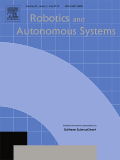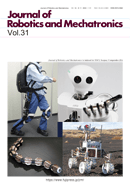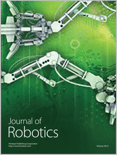
Intelligent Service Robotics
Scope & Guideline
Exploring Frontiers: Bridging AI and Robotics for a Smarter World
Introduction
Aims and Scopes
- Human-Robot Interaction (HRI):
Research in this area emphasizes the development of robots that can effectively communicate and collaborate with humans, enhancing user experience in various applications such as healthcare, education, and domestic assistance. - Robotic Control and Navigation:
The journal covers methodologies for robot control, including path planning, obstacle avoidance, and localization techniques. This includes the application of algorithms such as A*, RRT, and reinforcement learning to improve robot autonomy. - Soft Robotics and Actuation Mechanisms:
A significant focus on soft robotic technologies, exploring novel actuation methods, such as pneumatic and dielectric elastomers, which allow for compliant and adaptable robotic systems. - Robotics in Healthcare and Rehabilitation:
The journal publishes studies related to robotic systems designed for rehabilitation, assistance, and therapy, particularly focusing on exoskeletons and robotic devices that support physical therapy. - Multi-Agent Systems and Coordination:
Research on the coordination and collaboration among multiple robots, especially in complex environments, is a core area, addressing challenges in task allocation and cooperative behavior. - Artificial Intelligence Integration:
The integration of AI techniques, particularly machine learning and deep learning, into robotic systems for improved decision-making and adaptability in dynamic environments.
Trending and Emerging
- Integration of AI and Robotics:
A growing trend is the integration of advanced AI techniques, including deep learning and natural language processing, into robotic systems, enhancing their capabilities in perception, decision-making, and human interaction. - Social Robotics and Emotional Intelligence:
Research focusing on robots designed for social interactions, emphasizing emotional intelligence and the ability to understand and respond to human emotions, is becoming increasingly prominent. - Teleoperation and Remote Robotics:
With advancements in communication technologies, there is a rising interest in teleoperation systems, especially in healthcare and disaster response, where remote operation of robots is crucial. - Sustainable and Eco-Friendly Robotics:
Emerging themes also include the development of eco-friendly robotic systems and sustainable practices in robotics, which are increasingly relevant in the context of global environmental challenges. - Robotics in Education and Training:
The use of robotics as educational tools, particularly in STEM fields, is gaining traction, with a focus on developing interactive and engaging robotic systems for learning.
Declining or Waning
- Traditional Industrial Robotics:
Research focused primarily on traditional industrial robots and automation systems has decreased in favor of more intelligent and adaptive robotic systems that can operate in unstructured environments. - Basic Robotic Algorithms without AI:
There has been a noticeable decline in papers that focus solely on basic robotic algorithms without incorporating AI or machine learning techniques, indicating a shift towards more sophisticated approaches. - Static Robot Applications:
Applications of robotics in static or fixed environments, such as simple conveyor systems or basic robotic arms, are being overshadowed by research on mobile and adaptable robots capable of interacting with dynamic environments.
Similar Journals

Journal of Advanced Computational Intelligence and Intelligent Informatics
Innovating Insights in AI and InformaticsThe Journal of Advanced Computational Intelligence and Intelligent Informatics, published by FUJI TECHNOLOGY PRESS LTD, stands as a pivotal platform in the fields of Artificial Intelligence, Computer Vision, and Human-Computer Interaction. Established in 1997, this Open Access journal has been providing accessible insights into the latest advancements in computational intelligence and informatics since 2007. With its ISSN 1343-0130 and E-ISSN 1883-8014, this journal invites a diverse readership, including researchers, professionals, and students eager to explore innovative methodologies and applications. Despite its current Q4 ranking in the relevant categories, the journal remains committed to contributing valuable knowledge to the academic community and enhancing the global discourse in computational technologies. With its focus on fostering communication and collaboration among scholars, the journal plays an essential role in driving forward the understanding of intelligent systems and their applications in various domains.

Soft Robotics
Innovating the Future of Robotics with Soft Solutions.Soft Robotics, published by MARY ANN LIEBERT, INC, stands as a leading journal dedicated to advancing the field of soft robotics, which merges insights from artificial intelligence, biophysics, and control systems engineering to innovate in areas such as bio-inspired design, human-robot interaction, and flexible robotics. With a distinguished Q1 ranking in multiple categories, including Artificial Intelligence, Biophysics, and Control and Systems Engineering, this journal places itself at the cutting edge of interdisciplinary research, boasting impressive Scopus rankings that reflect its rigorous scholarship and influential contributions to the scientific community. Although it is not an open access journal, it provides valuable insights and findings for researchers, professionals, and students eager to explore the transformative potential of soft robotics in practical applications. The journal has published continuously since its inception in 2014, and will continue to converge between theory and application through 2024, emphasizing its commitment to expanding the frontiers of knowledge in this dynamic field. For those engaged in the exploration of robotics technologies shaped by soft materials and adaptive mechanisms, Soft Robotics is an essential resource that fuels innovation and discovery.

International Journal of Automation and Computing
Empowering Research in Control and Systems EngineeringInternational Journal of Automation and Computing, published by SPRINGERNATURE, is a premier academic journal dedicated to advancing knowledge in the fields of applied mathematics, computer science applications, control and systems engineering, and modeling and simulation. With an impressive impact factor and consistently ranked in the Q1 Quartile for its respective categories in 2023, the journal is recognized for its high-quality research and contributions to the automation and computing sectors. This journal provides open access to its articles, promoting the dissemination of innovative ideas and methodologies across a global audience. Based in China but serving an international community, the journal is key for researchers, professionals, and students looking to stay at the forefront of automation and computing technologies. Its rigorous peer-review process ensures that published works meet the highest scientific standards, making it an essential resource for those seeking to deepen their understanding and engage in cutting-edge research.

Journal of Field Robotics
Driving Progress in Robotics for Real-World ApplicationsJournal of Field Robotics, published by WILEY, is an esteemed peer-reviewed journal focusing on the cutting-edge developments in the area of robotics applied to real-world environments. With an ISSN of 1556-4959 and an E-ISSN of 1556-4967, this journal serves as a vital platform for researchers and professionals keen on advancing the fields of Computer Science Applications and Control and Systems Engineering, where it has earned a prestigious Q1 ranking in both categories as of 2023. The journal, which converges in its studies from 2006 to 2024, showcases original research that enhances the understanding and implementation of robotic systems in various fields, thus promoting innovative solutions to complex challenges. Access to the journal is through subscription-based options, ensuring a rigorous selection of high-quality research articles, reviews, and technical notes that contribute significantly to the academic community. With a solid Scopus ranking—39th out of 817 in Computer Science Applications and 17th out of 321 in Control and Systems Engineering, both in the 95th and 94th percentiles respectively—Journal of Field Robotics is essential reading for anyone interested in the future of robotics technologies and their transformative impact.

Industrial Robot-The International Journal of Robotics Research and Application
Innovative Insights into Robotics and AutomationIndustrial Robot-The International Journal of Robotics Research and Application is a premier academic journal published by Emerald Group Publishing Ltd in the United Kingdom. Since its inception in 1973, the journal has established itself as a critical resource for the advancement of knowledge in the fields of robotics and automation. With an impressive Q2 ranking across several categories, including Computer Science Applications, Control and Systems Engineering, and Industrial and Manufacturing Engineering, it places itself among the top-tier journals in its domain. The journal aims to disseminate high-quality research that addresses contemporary challenges and innovations in robotics, thereby supporting both academic inquiry and practical applications in industry. Researchers, professionals, and students are encouraged to contribute to its mission, as it remains vital for those seeking to engage with the ever-evolving landscape of robotic technologies.

Journal of Robotics Networking and Artificial Life
Empowering Innovation in AI and Networking.Journal of Robotics Networking and Artificial Life, published by ALife Robotics Corp Ltd, stands at the forefront of interdisciplinary research at the intersection of robotics, artificial intelligence, and networking, representing a vital resource for scholars and practitioners in these rapidly evolving fields. Established as an Open Access journal since 2014, it provides unrestricted access to cutting-edge research and innovative methodologies, fostering collaboration and knowledge dissemination globally. Although it currently holds a Q4 ranking in both Artificial Intelligence and Computer Networks and Communications, its commitment to advancing knowledge through robust peer review and dedicated publication practices positions it as a growing contender within these spheres. With a publication history covering the years from 2019 to 2023, this journal emphasizes the importance of novel insights and cross-disciplinary approaches. Researchers, professionals, and students are encouraged to contribute to and engage with the evolving discourse in robotics and artificial intelligence, making the Journal of Robotics Networking and Artificial Life an essential addition to their academic and professional resources.

ROBOTICS AND AUTONOMOUS SYSTEMS
Transforming Ideas into Intelligent Solutions.ROBOTICS AND AUTONOMOUS SYSTEMS, published by Elsevier, is a leading journal in the fields of robotics and automation, providing a platform for the dissemination of high-quality, peer-reviewed research. With an impressive impact factor and a prestigious reputation, this journal is classified in the Q1 category for major fields including Computer Science Applications, Control and Systems Engineering, Mathematics, and Software as of 2023. The journal boasts an extensive archive dating back to 1988, reflecting the evolution of the discipline and fostering innovative research discussions that are crucial for advancements in autonomous technologies. Researchers, professionals, and students are encouraged to contribute to and benefit from the ongoing dialogue within these dynamic fields. Accessible through various academic resources, ROBOTICS AND AUTONOMOUS SYSTEMS stands as a pivotal information source for those dedicated to exploring the frontiers of intelligent systems.

Frontiers in Robotics and AI
Unlocking Insights in Robotics and AI for a Global AudienceFrontiers in Robotics and AI is a leading journal dedicated to the exploration and dissemination of groundbreaking research in the fields of robotics and artificial intelligence. Published by FRONTIERS MEDIA SA in Switzerland, it has established itself as a vital resource for academics, professionals, and students since its inception in 2014. With an impressive Open Access model, the journal ensures that high-quality research is accessible to a global audience, fostering collaboration and innovation. The journal is recognized for its distinguished impact in the academic community, achieving Q2 quartile rankings in both Artificial Intelligence and Computer Science Applications as of 2023. It currently holds a solid position in Scopus rankings, with a rank of #123 out of 350 in Artificial Intelligence and #223 out of 817 in Computer Science Applications, reflecting its robust contribution to these dynamic disciplines. The journal's scope encompasses a wide range of topics, including but not limited to autonomous systems, machine learning, and human-robot interaction, making it an essential platform for innovative ideas and advanced research.

Journal of Robotics and Mechatronics
Catalyzing Collaboration in Cutting-edge EngineeringJournal of Robotics and Mechatronics, published by FUJI TECHNOLOGY PRESS LTD, stands at the forefront of innovation in the fields of robotics and mechatronics. Since its inception in 1989, this Open Access journal has become a vital resource for researchers, professionals, and students interested in advances that merge technology with mechanical systems, offering critical insights into practical applications and theoretical developments. With a commendable impact factor reflected in its Q2 rankings in both Computer Science (miscellaneous) and Electrical and Electronic Engineering, the journal serves as a platform for disseminating high-quality research and fostering academic collaborations. The journal enjoys wide accessibility since transitioning to Open Access in 2007, allowing for a global audience to engage with groundbreaking findings relevant to both industry and academia. Based in Tokyo, Japan, the Journal of Robotics and Mechatronics aspires to bridge the gap between research and practical implementation, encouraging the exploration of novel concepts and the sharing of scientific knowledge.

Journal of Robotics
Advancing the Future of Robotics ResearchJournal of Robotics, published by HINDAWI LTD, is a premier open-access journal dedicated to the rapidly evolving field of robotics. With its ISSN 1687-9600 and E-ISSN 1687-9619, the journal has been an essential resource for researchers, professionals, and students since its establishment in 2009. Based in England, the journal not only aims to disseminate cutting-edge research but also provides a platform for critical discussions on the latest advancements in robotics. Recognized for its quality, the journal holds a Q2 ranking in Computer Science (miscellaneous) and a Q3 ranking in Control and Systems Engineering for the year 2023. Spanning topics from autonomous systems to robotic engineering, the Journal of Robotics is indexed in various esteemed databases, making it a credible source for innovative research. The journal's commitment to open access ensures that its research reaches a broad audience, encouraging collaboration and driving forward the boundaries of technology and engineering.